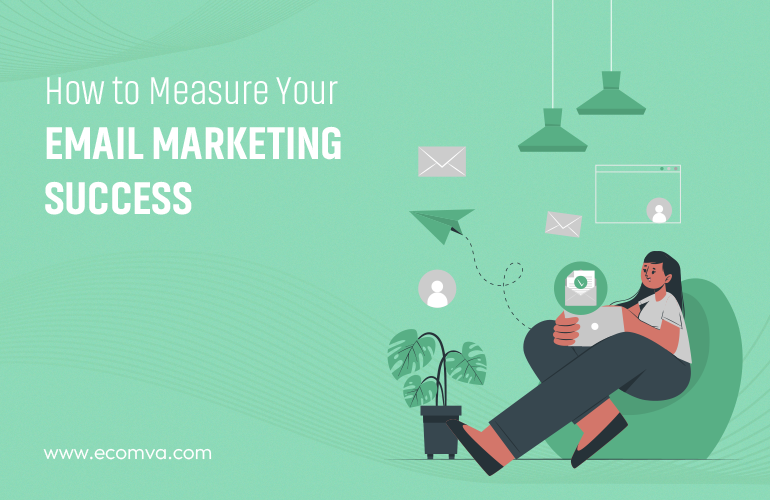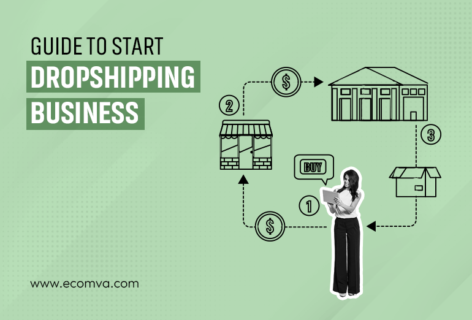How to Measure Your Email Marketing Success in 2024?

Do you know that 64 percent of small businesses depend on email marketing to reach out to customers? Nowadays, email marketing stands out as a robust tool that lets you establish engagement with your audience more effectively. However, the true power of email marketing is not just limited to crafting compelling campaigns. It is also imperative to measure the success of your email marketing efforts.
If you are also looking forward to leveraging this powerful tool for your business growth, then you should have a clear idea about the best ways in which you can measure its success or effectiveness in real time.
Through this detailed discussion, we will try to clear all your related doubts by letting you know about the essential steps to follow and metrics to track for gauging the performance of your email campaigns. So, make sure to read this from the start to the end before you opt for the best email automation service.
What is Email Marketing?
It refers to a digital marketing strategy which typically entails sending targeted emails to a group of people or prospective customers. Its main aim is to promote services and products or build relationships. Also, it can be employed for driving engagement.
So, it is considered a direct form of communication that lets businesses establish solid connections with their target audience, deliver tailored content, and achieve different marketing goals. To learn, all you need is to reach out to any agency dedicated to offering email marketing automation services.
What are the Key Email Marketing Metrics to Measure Success?
Here are discussed the most critical metrics that will help in measuring the success of email marketing campaigns:
Open Rate
The open rate is the percentage of emails delivered that the recipients opened. It suggests how effective your subject lines are. Not only that, but it also offers you an indication of the overall email engagement.
Click-Through Rate (CTR)
CTR refers to the percentage of email recipients who clicked on one or more links that are present in an email. With this, you can effectively measure the level of engagement and interest of people in the content of your emails. For more details, reach out to a professional email marketing automation service provider.
Conversion Rate
Conversion rate is the percentage of email recipients who have taken the desired action, which includes filling out a form or making a purchase, depending on the call-to-action provided in the email. It suggests how effective your email is for driving the intended result.
Bounce Rate
Bounce rate is the percentage of sent emails that could not be delivered to the inbox of the recipient. It offers you an indication of the health of your email along with the quality of your email deliverability. Many agencies providing the best email marketing automation service will also offer suggestions on how to reduce bounce rates.
List Growth Rate
It refers to the rate at which your email subscriber list grows over time. With this, you can get an idea about the success of your efforts in attracting new subscribers and growing your audience.
Forward/Share Rate
The forward/share rate is the percentage of email recipients who forwarded or shared your email with others. This metric provides an indication of the viral potential of your content. Also, it tells you the extent to which it resonates with your audience.
Unsubscribe Rate
The unsubscribe rate is the percentage of email recipients who have unsubscribed or opted out of your email list. So, it evaluates the overall health of your email list and monitors the level of disinterest or dissatisfaction among your audience.
Thus, by monitoring and analyzing all the above-discussed email marketing metrics, you can get valuable insights into the performance and effectiveness of your email campaigns. Frequent analysis and optimization based on these metrics facilitate the success and constant improvement of your email marketing strategy.
What are the Major Steps to Follow for Measuring Your Email Marketing Success?
Email marketing is known to be a robust tool, and to get an understanding of its success, it typically necessitates a strategic approach. Many agencies offering the best email automation service will help you measure effectively.
Below, we will focus on discussing the key steps that one should essentially follow to measure the success of your email marketing campaigns. So, let’s have a look:
Setting Clear Goals for Email Campaigns
- Defining Objectives: The first and most crucial step that you need to follow involves clearly outlining what you aim to achieve with every email campaign. It can be anything from promoting an event to increasing brand awareness to driving sales.
- Aligning Goals with Business Objectives:You should ensure that your email campaign’s goals align with broader business objectives. By ensuring this, you can make sure that the specific email efforts you adopt contribute to overall business success.
- SMART Goal Setting (Specific, Measurable, Achievable, Relevant, Time-Bound):After that, you need to make use of SMART criteria for setting goals that are specific, measurable, achievable, relevant, and time-bound. This framework offers a transparent roadmap for goal achievement.
Analyzing Engagement Metrics
- Understanding User Engagement: The subsequent step involves diving deep into key metrics such as click-through rates, open rates, and time spent on emails. With this, you can get an understanding of how engaged your audience is. Also, by relying on this insight, you would be able to come up with more compelling content.
- Segmenting Audience for Deeper Analysis: You also need to segment your audience on the basis of different parameters, which include behavior, demographics, or purchase history. So, evaluating engagement within these segments helps you to get valuable insights.
- A/B Testing for Optimization: Now, it is time to conduct A/B tests on various elements of your emails, like visuals, subject lines, and calls to action. This iterative testing procedure helps in optimizing to ensure better engagement.
Tracking Conversions and Revenue
- Linking Email Campaigns to Conversions: As a part of the next step, you should consider implementing tracking mechanisms for linking email campaigns directly to conversions. It could include employing conversion tracking tools or utilizing UTM parameters on links.
- Monitoring Sales and Revenue Generated: After that, you need to keep a close track of the actual sales and revenue that is generated as a result of your email campaigns. With this data, you could evaluate the tangible impact on the bottom line.
- Attribution Modeling for Conversion Tracking: You can use attribution modeling to get the know-how of different touchpoints in a customer’s journey, which helps boost conversions. It also aids in accurately attributing value to each of the channels.
Utilizing Email Marketing Analytics Tools
- Google Analytics Integration: In this step, you need to integrate Google Analytics with your email marketing platform. It will help you to get a comprehensive view of user behavior on your site that originates from email campaigns.
- Email Service Provider Analytics: You should also focus on making use of analytics tools that are provided by your email service provider. With this, you can get in-depth insights into the performance of your email campaigns.
- Third-Party Analytics Platforms: After that, you should explore different third-party analytics platforms for additional layers of analysis. These also help in cross-referencing data for a much better understanding. If you are having a tough time implementing this step, you can reach out to the best email automation service.
Monitoring Deliverability Metrics
- Inbox Placement Rate: Another important thing that you need to do involves keeping a close eye on your inbox placement rate. It helps ensure that your emails reach the inboxes of the intended recipients.
- Spam Complaint Rate: The next step involves monitoring the rate at which recipients are involved in marking your emails as spam. Following this step is crucial as it can considerably impact the reputation of your sender.
- Email List Hygiene Practices: You should make sure to clean and maintain your email list on a regular basis to eradicate any inactive or unengaged subscribers. Thus, it contributes to better deliverability. For any related assistance, you can get in touch with a professional eBay dropshipping virtual assistant who is dedicated to offering Klaviyo email marketing services.
Assessing Customer Feedback and Surveys
- Gathering Customer Responses: As a part of this step, you should focus on actively seeking and amassing feedback from your audience, primarily through different channels like social media or email replies.
- Implementing Surveys and Feedback Forms: If you aim to collect structured insights from your audience, then all you need is to design and implement feedback forms or surveys within your emails.
- Using Feedback for Continuous Improvement: You should employ the feedback received to make well-informed decisions. Also, it allows you to implement changes that effectively align with the preferences of your audience.
Benchmarking Against Industry Standards
- Researching Industry Benchmarks: Now, it is the time to understand benchmarks for your industry, which will help contextualize your performance.
- Comparing Performance Metrics: Also, you need to compare your metrics, especially against industry benchmarks, to detect areas for improvement.
- Adjusting Strategies Based on Benchmarks: After that, you should consider modifying your strategies on the basis of benchmark comparisons, which will allow you to stay competitive.
Iterative Improvements and Testing
- Importance of Continuous Improvement: It is imperative to emphasize the need for constant improvement in your email marketing strategies. As a part of it, you should frequently review performance and find out improvement areas.
- Conducting Regular Email Audits: You should conduct audits of your email campaigns on a periodic basis. With this, you can evaluate content, design, and overall effectiveness.
- Implementing Lessons Learned in Future Campaigns: The final step involves applying insights that are gained from feedback, analytics, and testing for improving future email campaigns. Thus, it ensures a cycle of constant learning and improvement.
Final Thoughts
All in all, effectively measuring the success of email marketing necessitates a holistic approach that involves a combination of strategic goal-setting, key metrics, and constant improvement. By successfully following all the above-discussed steps, you can get an in-depth understanding of your email marketing performance. It also allows you to constantly optimize your strategies to get better outcomes.
If you need any assistance related to product data entry, you can get in touch with an eBay dropshipping virtual assistant offering best-in-class product data entry services.





![How Dropshipping Works The Ultimate Guide [Updated for 2023]](https://www.ecomva.com/wp-content/uploads/2022/12/Dropshipping-472x320.jpg)





